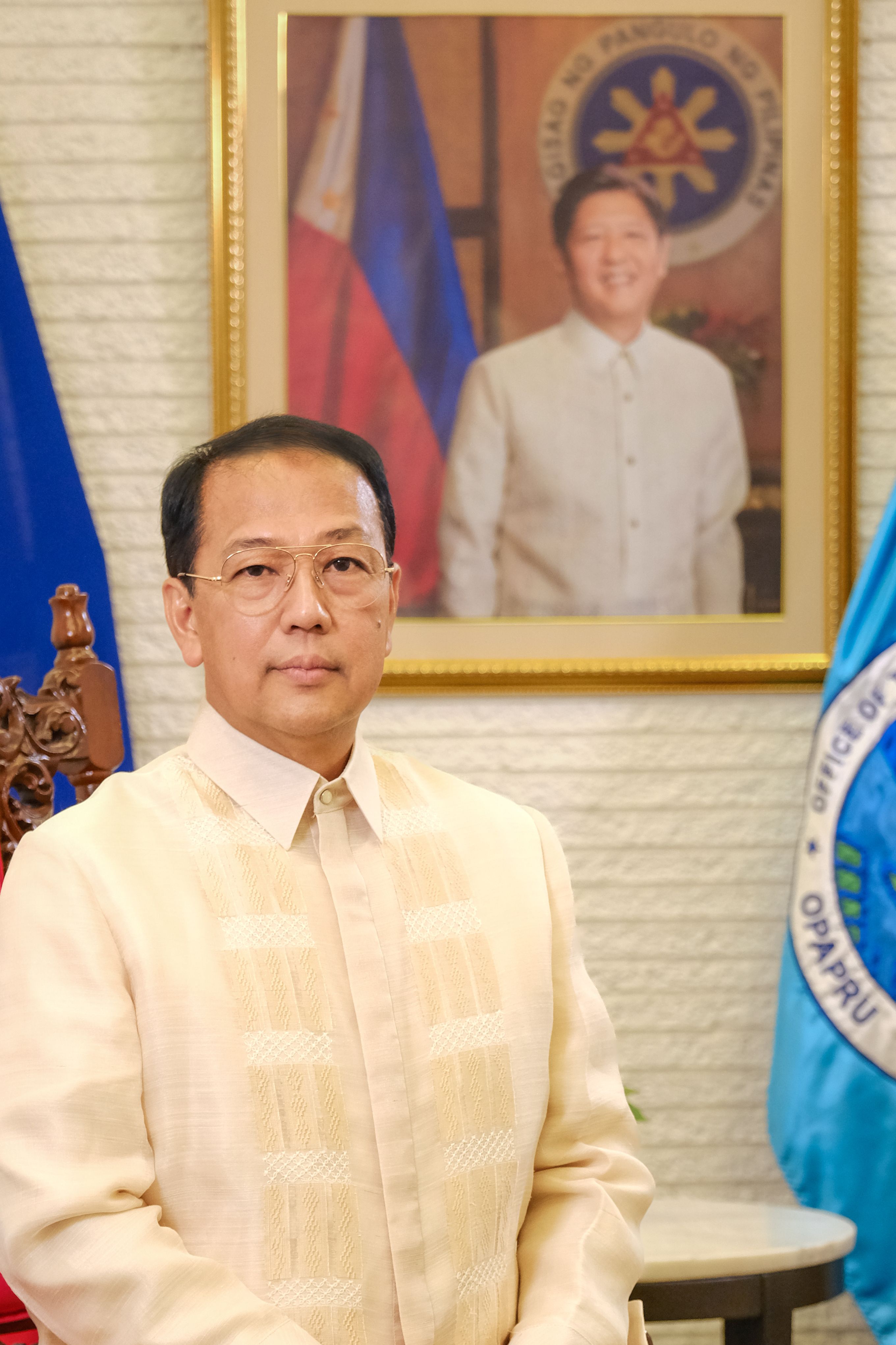PEACE BY PEACE

By Secretary Carlito G. Galvez, Jr.
Peace in the Philippines was an elusive dream that many actors struggled to build.
The Office of the Presidential Adviser on Peace, Reconciliation and Unity (OPAPRU), under the leadership of President Ferdinand R. Marcos, Jr., takes off from the gains of big and small efforts that created big stories.
Where we are now did not happen in a flash but rather developed through a tedious process of combining building blocks that address deeply seated concerns.
It is literally piece by piece, and peace by peace.
The Marcos Administration’s resolve to achieve a just and lasting peace is written down in a comprehensive Five-Point Peace, Reconciliation, and Unity Agenda.
The essence of this strategy is in the president’s declaration that “Peace is more than the cessation of hostilities.
It is about the creation of a social order that values human dignity, improves lives, and promotes progress.”
The government’s Peace Agenda serves as the cornerstone of the OPAPRU as it oversees and manages the implementation of the country’s peace processes with the various revolutionary groups.
It is this holistic, integrated and inclusive strategy that enables the national government to push forward, build on and sustain the gains of peace amidst the many challenges that have come our way.
It is the aspiration of President Marcos Jr and the rest of our countrymen to end all internal armed conflict under this administration.
Agenda 1 is the completion of peace agreements with the Moro Islamic Liberation Front (MILF) and the Moro National Liberation Front (MNLF) toward healing and reconciliation in the Bangsamoro.
The Marcos administration aims to achieve lasting peace by empowering the Bangsamoro people to shape their sociopolitical future by advancing the landmark peace deals with the major groups.
As what the President said during a meeting between the national government and the BARMM: "A stronger BARMM means a stronger Mindanao, and a stronger Mindanao means a stronger Philippines, bringing us closer to achieving our agenda."
Former MILF and MNLF combatants are gradually being reintegrated into mainstream society as peaceful, productive, and law-abiding citizens through the normalization and transformation programs. They have become active agents of peace and development.
Agenda 2 is the ending of armed conflict and armed struggle with the Communist Party of the Philippines-New People's Army-National Democratic Front through peace negotiations.
The government involves local government leaders in the negotiations and in forging political settlements. The local leaders are made accountable for the transformation programs that give the former combatants and their families the chance to rebuild their lives. Armed struggle has been made irrelevant for social change.
Agenda 3 is the completion and sustainment of the gains of the signed peace agreements with the Rebolusyonaryong Partido ng Manggagawa ng Pilipinas/Revolutionary Proletarian Army/Alex Boncayao Brigade (RPMP-RPA-ABB) and the Cordillera Bodong Administration-Cordillera People’s Liberation Army (CBA-CPLA).
The two existing political peace agreements with the two organizations are now in the conclusion stage. We are seeing the success of the localization of the implementation of the transformation program. The local government units are at the forefront of implementing various socioeconomic programs for the former rebels. This allows the former rebels and their families to earn sustainable incomes and improve their socioeconomic well-being.
Members of the CBA-CPLA and KAPATIRAN have become a testament that good things come to those who give up armed struggle and walk the path of peace.
Agenda 4 is the enhancement of the resilience for peace of communities and vulnerable groups through social healing and peacebuilding approaches in support of the peace processes.Through the Social Healing and Peacebuilding or SHAPE Program, the government is establishing robust peace institutions, policies, and processes, especially in areas that are still recovering from the impact of armed conflict such as Marawi City.
It aims to help prevent the recurrence and resurgence of violent extremism through interfaith dialogues and to foster mutual understanding, healing, and solidarity, especially among the victims of violence. We are also actively promoting peace education, which is a critical measure for establishing a culture of peace and resilience. This initiative equips communities with the tools they need to handle future conflicts.
Agenda 5 is the delivery of conflict-sensitive and peace-promoting compliant socioeconomic interventions to address the key drivers of conflict through convergence and complementation in support of the peace processes.
Through the Payapa at Mapayapang Pamayanan or PAMANA Program, the government answers the questions on the issues of poverty, underdevelopment and inequality. These infrastructure (and some soft) projects focus on rebuilding communities that were once hotbeds of rebellion. This creates favorable conditions where sustainable peace can firmly take root.
The national government acknowledges that it cannot implement all interventions alone. Therefore, it is employing a whole-of-nation, whole-of-society approach. This strategy involves all stakeholders—line agencies, local government units, civil society, academia, religious communities, the security sector, the private/business sector and international donors—each of whom has a stake and is empowered to pursue their peace initiatives in alignment with the national peace agenda.
The OPAPRU thanks the management and members of the Manila Bulletin for partnering with us in the journey of peace.
(Secretary Carlito G. Galvez, Jr., is the Presidential Adviser on Peace, Reconciliation and Unity. He advises the President on the implementation of the Philippine Comprehensive Peace Process.)